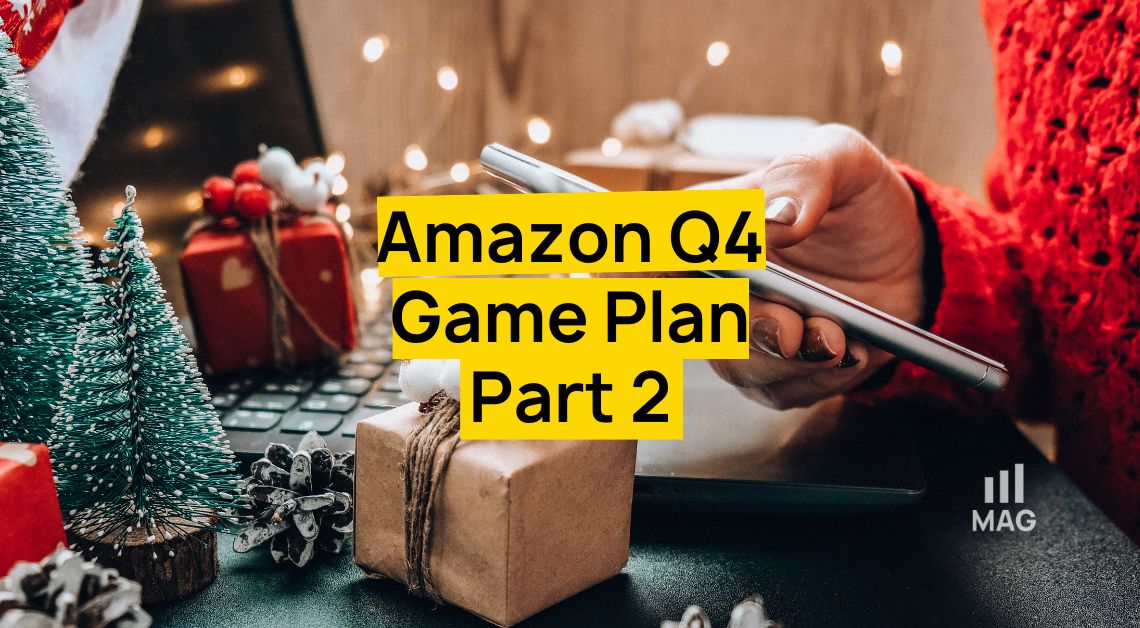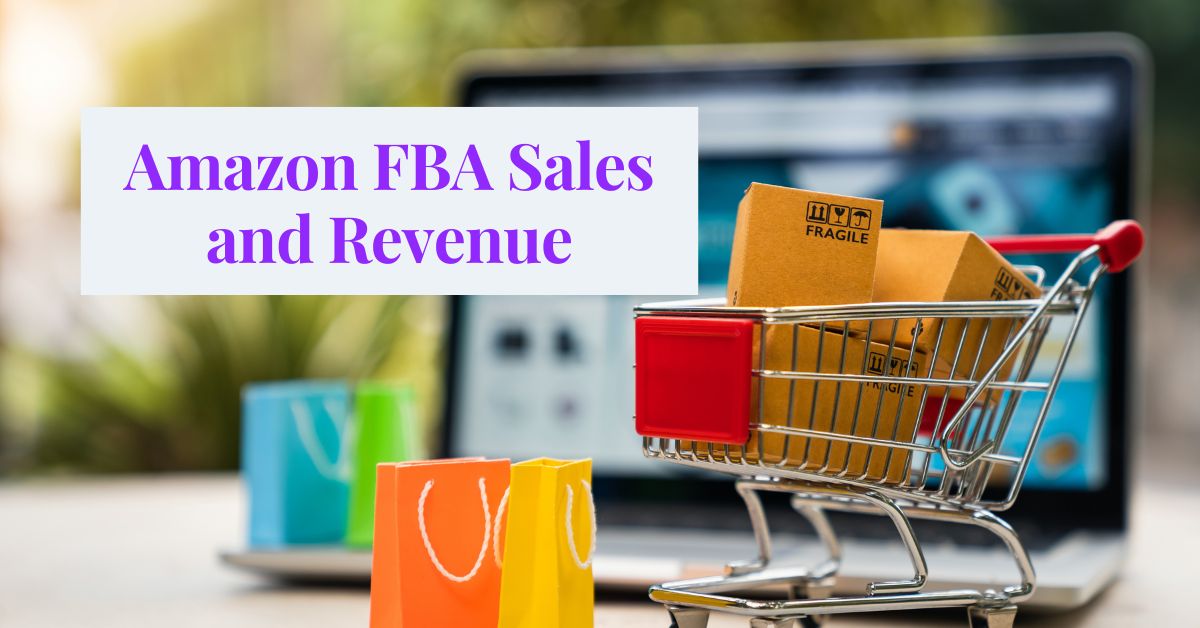Handle FBM Orders This Christmas Season with finesse and elevate your festive sales game! Do you have FBM SKUs in your inventory? Then this is an article that will significantly make order fulfillment a breeze for you this holiday shopping season.
FBA reigns supreme over FBM in most situations, but having both FBA and FBM SKUs in your inventory helps in maintaining customer loyalty and in ensuring sales.
1. Handle FBM Orders: Know When Orders Came In
Knowing when orders just came in is crucial for an Amazon FBM seller for several reasons:
Quick Completion:
Having knowledge of incoming orders enables sellers to start the fulfillment process as soon as possible. This guarantees that goods are ready for shipment without needless delays, satisfying client demands for prompt delivery.
Management of Inventory:
Sellers can closely monitor their inventory levels with the aid of real-time order notifications. This knowledge is essential for averting stockouts, enabling vendors to replenish in-demand items, and preserving a flawless shopping encounter for patrons.
Client Interaction:
Sellers are able to promptly communicate with customers when they are immediately aware of new orders. Timely delivery confirmations and shipment information not only increase customer satisfaction but also foster confidence in the seller’s dependability.
Functional Effectiveness:
It is possible for sellers to efficiently arrange their workflow by knowing when orders are received. To process orders quickly, this entails setting up the appropriate quantity of packaging supplies, liaising with shipping companies, and streamlining internal procedures.
Superior Customer Service:
Incoming orders should be handled proactively so that sellers can quickly resolve any problems. Being aware of new orders helps provide exceptional customer service, whether it’s by addressing possible issues or responding to questions from customers.about s
Watch this video to know about shipping FBM Orders:
How To Know When A Customer Ordered Your Products
Make sure the correct email address is on file and that you are subscribed to the appropriate notifications by customizing your notification options.
Best Practices To Follow
Regularly Review Notification Preferences: Periodically update settings to match changes in your business or personal preferences, staying informed about new options introduced by Amazon.
Utilize Multiple Contact Methods: Diversify notification channels (email, SMS, app) for redundancy in case of communication issues.
Set up Mobile Notifications: Install Amazon Seller app and enable push notifications for real-time updates, especially while on the move.
Test Notification Systems: Regularly test systems to ensure alerts reach you, addressing issues proactively.
Stay Informed About Policy Changes: Keep up with Amazon’s policy updates to align your preferences with new requirements or features.
2. Handle FBM Orders: Set Your Order Handling Limits
Setting an order handling limit for your FBM orders on Amazon can be a valuable tool for managing your business and ensuring smooth operations, especially during busy periods like the holiday season. Here are some key reasons why it’s important:
- Maintain quality and avoid errors: A handling limit helps you avoid taking on more orders than you can comfortably process within your desired timeframe. This prevents rushing through orders, which can lead to picking mistakes, packing errors, and ultimately, unhappy customers.
- Effectively manage your time and resources: You can make sure you have the time, personnel, packaging supplies, etc. needed to complete all orders quickly and on schedule by establishing a limit. By doing this, you can avoid burnout and keep up a manageable workload.
- Prioritize orders and satisfy customers: You can rank orders according to shipping options or urgency up to a certain point. By doing this, it is ensured that Prime deadlines are fulfilled and that customers receive their orders on schedule.
- Prevent stockouts and inventory depletion: Set a limit to help you stay away from overselling and stockouts. This keeps you safe from unfavorable reviews left by disgruntled clients and guarantees that you can accurately complete every order.
- Handle unforeseen order spikes: Orders may suddenly increase during busy times like holidays or promotions. A handling limit serves as a safety net to keep you from getting overloaded and guarantees that you can continue to uphold quality control even in the face of high volume.
- Increased flexibility and control: By putting a limit on your workload, you can modify it in response to unforeseen circumstances, such as impending holidays or supplier delays, or based on your capacity.
- Safeguard your seller metrics: Unfavorable reviews and delayed shipments can have a detrimental effect on your visibility and seller metrics on Amazon. By establishing a handling limit, you can steer clear of these problems and keep your platform reputation intact.
How To Set Your Order Limit
Decide how many seller-fulfilled orders you can ship in a single day and set your Order Handling Capacity accordingly. You can set a longer handling time at the SKU level, but the default handling time for seller-fulfilled orders has been changed from two days to one.
Best Practices To Follow
When setting order limits as an FBM (Fulfillment by Merchant) seller on Amazon, consider the following best practices to optimize your operations:
- Regularly Assess Capacity:Conduct periodic assessments of your operational capacity. Take into account factors such as staffing, warehouse space, and current inventory levels to determine a realistic order limit.
- Factor in Processing Time: Account for the time it takes to process orders, including picking, packing, and shipping. Set order limits that align with your ability to fulfill orders within Amazon’s specified shipping timeframes.
- Set Realistic Limits: Be realistic about your capabilities. While it might be tempting to set high order limits, it’s crucial to ensure that you can consistently meet these limits without compromising on service quality.
- Use Seasonal Adjustments: Adjust order limits seasonally based on historical sales data and expected fluctuations in demand. This proactive approach helps you optimize your operations throughout the year.
- Monitor Performance Metrics: Regularly review performance metrics related to order fulfillment, such as order processing times and customer feedback. Use this data to fine-tune your order handling limits for continuous improvement.
- Implement Automated Alerts: Leverage automated alerts or notifications to be informed when you are approaching or reaching your order handling limits. This allows for timely adjustments and prevents accidental overselling.
3. Handle FBM Orders: Make Doable Delivery Timeline
A doable delivery timeline for an Amazon FBM seller refers to the estimated timeframe between receiving an order and delivering it to the customer, being realistic and achievable within your own operational capabilities. It’s essentially a promise you make to both Amazon and your customers, so getting it right is crucial for maintaining good seller metrics and customer satisfaction.
Verify the accuracy of the delivery promises you make. Verify the transit time setup in your shipping templates, or activate the automation of the shipping settings to compute precise delivery guarantees automatically.
Here’s how to define a doable delivery timeline for your FBM business:
- Efficient Internal Processes: Streamline your internal processes, considering factors like picking, packing, and labeling times. Evaluate staffing, equipment availability, and warehouse layout to enhance efficiency.
- Strategic Shipping Method: Align your shipping method with desired delivery timeframes. While express options offer speed, standard choices may better suit your budget and processing capabilities.
- Honest Timeframes Matter: Check Amazon’s estimated delivery windows and aim to meet or exceed them. Clearly communicate delivery expectations to customers in listings and order confirmations, addressing any potential delays.
- Include Buffer Time: Factor in buffer time for unforeseen challenges like inventory errors or shipping delays. This precautionary step prevents missed deadlines and ensures customer expectations are well-managed.
- Continuous Monitoring and Adjustment: Regularly review order fulfillment data to track processing times, shipping speeds, and customer feedback. Use this data to make informed adjustments and refine your delivery timelines.
- Quality Over Rushing: Prioritize delivering high-quality orders on time over promising fast delivery. Being slightly conservative with timeframes minimizes errors and ensures customer satisfaction.
Here’s a related video to watch:
4. Handle FBM Orders: Pick and Pack Effectively
Optimizing picking and packing processes is crucial for efficiently handling holiday FBM orders. Quick order fulfillment, reduced shipping delays, and enhanced customer satisfaction are direct outcomes of streamlined operations during peak periods.
Here are some ways to do it
- Warehouse Layout Optimization:
- Map it Out: Design your warehouse layout for maximum efficiency. Group frequently ordered products together to minimize travel time during picking.
- Label Everything: Clearly label shelves, bins, and picking locations to avoid confusion and wasted time.
- One-Way Traffic: Implement a one-way picking flow to prevent bottlenecks and ensure smooth movement.
- Batch Picking Prowess:
- Group by Order: Batch pick orders by destination or shipping method for faster processing and reduced sorting time.
- Pick Lists FTW: Utilize pick lists generated from your FBM platform to ensure accuracy and avoid missed items.
- Double-Check Champions: Train your team to double-check each picked item before moving on to the next order.
- Packing Perfection:
- Standardize the Process: Establish standard packing procedures for different product types and shipping methods. This consistency reduces errors and saves time.
- Pre-Pack Essentials: Pre-pack frequently used packing materials like boxes, tape, and bubble wrap to avoid delays during order fulfillment.
- Branding Brilliance: Add your brand logo or personalized touches to packaging for an extra festive feel and customer satisfaction boost.
- Technology to the Rescue:
- Inventory Management Software: Invest in inventory management software to track stock levels, optimize picking routes, and generate pick lists.
- Barcode Scanners: Equip your team with barcode scanners for accurate and fast item identification during picking and packing.
- Automated Shipping Solutions: Explore automated shipping solutions to streamline label printing and shipping processes.
- Bonus Tips for Holiday Success:
- Hire Seasonal Help: Consider hiring temporary staff to handle the holiday order surge and maintain efficient fulfillment.
- Communicate Clearly: Inform customers about potential shipping delays due to the holiday season and set realistic delivery expectations.
- Prepare for Returns: Anticipate an increase in post-holiday returns and have a clear and efficient return policy in place.
To know more, here’s a video you can watch:
5. Handle FBM Orders: Plan Your Shipping Strategy
A robust shipping strategy is essential to guaranteeing on-time delivery, reducing shipping expenses, and raising customer satisfaction levels overall, particularly during the holiday shopping season.
Some actionable hacks to plan a shipping strategy
Diverse Shipping Choices:
- Provide an array of shipping options, including standard, expedited, and express, tailored to accommodate diverse customer preferences and budget considerations.
Dynamic Shipping Costs:
- Seamlessly integrate live shipping rate APIs into your system to deliver precise and competitive shipping costs in real-time at the checkout stage, enhancing transparency and customer satisfaction.
Transparent Holiday Deadlines:
- Clearly communicate specific shipping deadlines aligned with various delivery choices during the holiday season. This transparent approach helps set realistic customer expectations and ensures timely deliveries.
Implement Gift-Wrapping Services:
- Offer gift-wrapping services for holiday orders. This not only provides an additional service for customers but can also contribute to increased sales during the gift-giving season.
Optimize Packaging for Efficiency:
- Review and optimize your packaging to minimize waste and reduce shipping costs. Efficient packaging not only saves on expenses but can also contribute to a more sustainable and environmentally friendly approach.
Monitor Carrier Performance:
- Regularly monitor the performance of shipping carriers. Stay informed about any carrier-related issues or delays and adjust your shipping strategy accordingly to ensure reliable delivery.
Offer Bundle Deals:
- Create bundle deals that include multiple products with a single shipping charge. This can encourage customers to buy more items in a single transaction, maximizing the value of each order.
6. Handle FBM Orders: Communicate Well With Your Customers
Effective customer communication becomes vitally important during the Christmas rush to ensure the seamless and successful fulfillment of your FBM orders. Here’s why:
Enhance Customer Experience:
- Transparent Tracking:
- Keep customers informed with real-time tracking, minimizing inquiries and anxiety. Proactive communication about delays manages expectations, preventing frustration.
- Proactive Problem-Solving:
- Anticipate and communicate solutions for issues like shipping delays promptly, showcasing your commitment to customer satisfaction and building trust.
- Festive Communication:
- Inject holiday cheer with festive language and visuals, cultivating a positive and memorable experience for customer loyalty and brand affinity.
Efficiency and Cost Savings:
- Streamlined Communication:
- Clear and proactive communication reduces customer support inquiries, saving time and resources for efficient order fulfillment.
- Fewer Returns and Complaints:
- Informed customers with managed expectations lead to fewer returns and complaints, resulting in improved business performance and lower costs.
- Positive Reviews and Repeat Business:
- Excellent holiday communication leaves a positive impression, translating into reviews, repeat business, and potential referrals.
Building Brand Loyalty and Trust:
- Transparency and Openness:
- Foster trust through open communication, keeping customers informed about potential setbacks, and encouraging future purchases.
- Personalization and Care:
- Add a personal touch with name mentions, product references, or handwritten notes, demonstrating care and fostering genuine connections.
- Positive Holiday Memories:
- Effective holiday communication creates positive memories associated with your brand, fostering long-term loyalty and advocacy.
Watch this video to know more:
Creative Ways to Communicate With Your Customers
Holiday-Themed Emails:
Craft holiday-themed emails with cheerful subject lines and festive visuals. Use personalized greetings, express gratitude for their business, and provide updates on order fulfillment. Consider including exclusive holiday offers or discounts.
Interactive Unboxing Experience:
Encourage customers to share their unboxing experiences on social media by including a holiday-themed hashtag. Consider adding a small, delightful holiday-themed item or note in packages to surprise and delight customers.
Countdown to Delivery:
Create a fun countdown to delivery in your order confirmation emails. Use creative graphics or emojis to build excitement as the delivery date approaches. This adds an element of anticipation for customers.
Personalized Thank-You Notes:
Include handwritten or personalized thank-you notes in packages expressing gratitude for their holiday purchase. Use the opportunity to wish them a joyful holiday season and assure them of your commitment to exceptional service.
Festive Packaging:
Upgrade your packaging to include festive elements such as holiday-themed wrapping paper, ribbons, or stickers. This not only enhances the holiday spirit but also makes the unboxing experience more memorable.
Holiday Gift Guides:
Create a holiday gift guide and share it with your customers. Highlight popular products, bundle deals, or limited-time offers. This not only helps customers with gift ideas but also promotes your products effectively.
Live Holiday Q&A Sessions:
Host live Q&A sessions on social media platforms to address customer queries about holiday orders. Use the opportunity to share behind-the-scenes glimpses of your holiday fulfillment process and spread some festive cheer.
Surprise Giveaways:
Organize surprise giveaways or contests exclusively for customers who make holiday purchases. This adds an element of excitement and encourages engagement with your brand during the festive season.
Virtual Holiday Cards:
Create virtual holiday cards that customers can download or share. Include a warm holiday message, a discount code, or a special offer as a token of appreciation for their loyalty.
Share Customer Success Stories:
Showcase heartwarming customer success stories related to holiday purchases. Share testimonials or photos (with customer consent) to create a sense of community and connection during the festive period.
7. Handle FBM Orders: Use Amazon Buy Shipping Labels
Through the Amazon Seller Central platform, FBM sellers can purchase shipping labels for their orders directly through Amazon Buy Shipping. FBM sellers can purchase and print shipping labels directly from their Amazon account for their orders, saving them the trouble of using third-party shipping companies.
Amazon Buy Shipping safeguards a seller’s metrics by reducing late deliveries, simplifying tracking requirements, offering A-to-z claims protection for on-time shipments, and suppressing negative feedback associated with delays or undelivered packages.
8. Handle FBM Orders: Monitor Your Account Health
Amazon FBM sellers can monitor their account health and ensure successful order fulfillment during the Christmas season by adopting the following strategies:
Check Dashboard Regularly:
- Utilize Amazon Seller Central’s Account Health Dashboard to monitor key metrics like order defect rate, late shipment rate, and valid tracking rate for valuable insights.
Set Up Alerts:
- Configure health notifications in Seller Central to receive timely alerts about emerging issues or metric changes, allowing swift action to address concerns.
Monitor Late Shipments:
- Keep a vigilant eye on Late Shipment Rates, especially crucial during the holiday season. Implement efficient order and shipping workflows to minimize delays.
Enhance Tracking Rate:
- Ensure a high Valid Tracking Rate by using Amazon Buy Shipping for automatic tracking updates. This not only boosts customer satisfaction but also maintains positive account health.
Promptly Handle A-to-z Claims:
- Regularly check and promptly address A-to-z claims to prevent negative impacts on account health and overall seller performance.
Watch Inventory Levels:
- Monitor inventory levels closely to avoid stockouts during the busy holiday season. Regularly update inventory to prevent fulfillment challenges.
Optimize Shipping Processes:
- Streamline shipping processes to efficiently handle increased order volumes. Implement batch processing, optimize packaging workflows, and use efficient shipping solutions.
Proactive Customer Communication:
- Proactively update customers on order progress, shipping times, and potential delays. Transparent communication helps manage expectations and reduces the likelihood of negative feedback.
Leverage Metrics Reports:
- Utilize Seller Central’s performance metrics reports for detailed insights. Analyze trends, identify areas for improvement, and take corrective actions promptly.
Stay Informed on Policies:
- Stay abreast of any policy changes related to order fulfillment and account health on Amazon. Adapting to updates ensures alignment with platform requirements.
Prepare for Increased Service Needs:
- Anticipate higher customer service needs during the Christmas season. Have a well-prepared team to handle inquiries, provide assistance, and address issues promptly.
9. Handle FBM Orders: Prepare for Post-Holiday Operations
As an Amazon FBM seller, the holiday rush may be over, but your work isn’t done yet! Preparing for post-holiday operations is crucial for smooth business continuity and maintaining a good seller reputation. Here are some key steps you can take:
Inventory Management:
- Reconcile Your Stock: To find inconsistencies between your records and actual stock levels, carry out a comprehensive inventory count. This aids in monitoring possible losses and deters overselling in the future.
- Examine sales information: Determine which products did and did not perform well. Make necessary adjustments to your inventory levels and sourcing plans for the next few seasons based on this information.
- Clear Out Slow-Moving Products: To make room for new products, offer post-holiday discounts or promotions to get rid of unsold inventory.
Returns and Exchanges:
- Prepare Your Return Policy: Make sure all deadlines, terms, and procedures are communicated clearly and that the policy is readily available. Take the initiative and prepare for a possible rise in return requests.
- Simplify Return Processing: Create a system that is effective in managing returns, with prompt communication, unambiguous instructions for customers, and timely exchanges or refunds.
- Restock or Repurpose: Assess returned goods to see if they can be salvaged, restocked, or used in another way. In doing so, waste is reduced and potential profit is increased.
Customer Service:
- Prioritize Support: Be prepared for a potential surge in customer inquiries after the holidays. Ensure your customer service team is adequately staffed and well-equipped to handle questions about returns, order updates, and post-holiday promotions.
- Maintain Transparency: Communicate openly and honestly with customers about any delays or challenges during the post-holiday period. Offer proactive solutions and address concerns promptly.
- Gather Feedback: Use the post-holiday period to solicit feedback from customers about their experience. This valuable input can inform future inventory management, product offerings, and communication strategies.
Financial Planning:
- Review Spending: Examine how much you spent over the holidays and pinpoint areas where you can cut costs in the future. This could entail locating different suppliers, haggling for lower shipping costs, or simplifying internal operations.
- Monitor Cash Flow: Be sure you have enough money to cover any impending operational costs, post-holiday promotions, and possible returns. Pay particular attention to your cash flow.
- Plan for Future Sales: Make informed decisions about your inventory and marketing strategies by using sales data and industry trends to predict future sales seasons.
In conclusion, mastering how to handle FBM orders on Amazon is a key element in achieving long-term success as a seller.
The holiday season, in particular, presents both challenges and opportunities, making it essential for sellers to optimize their strategies.
With a commitment to efficiency, customer satisfaction, and staying informed about platform updates, Amazon FBM sellers can not only meet but exceed the expectations of their customers, ensuring a prosperous and rewarding journey in the world of e-commerce.









